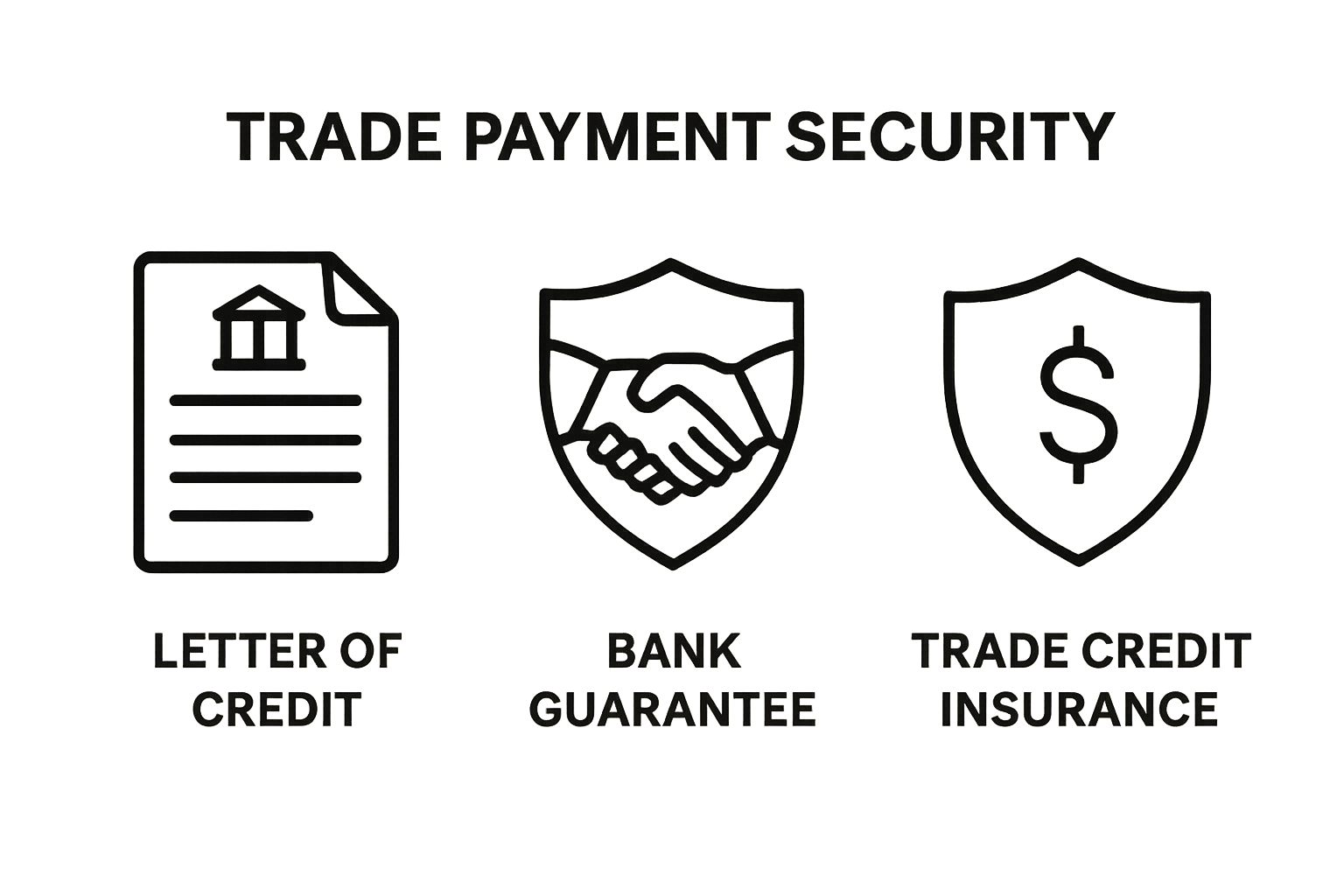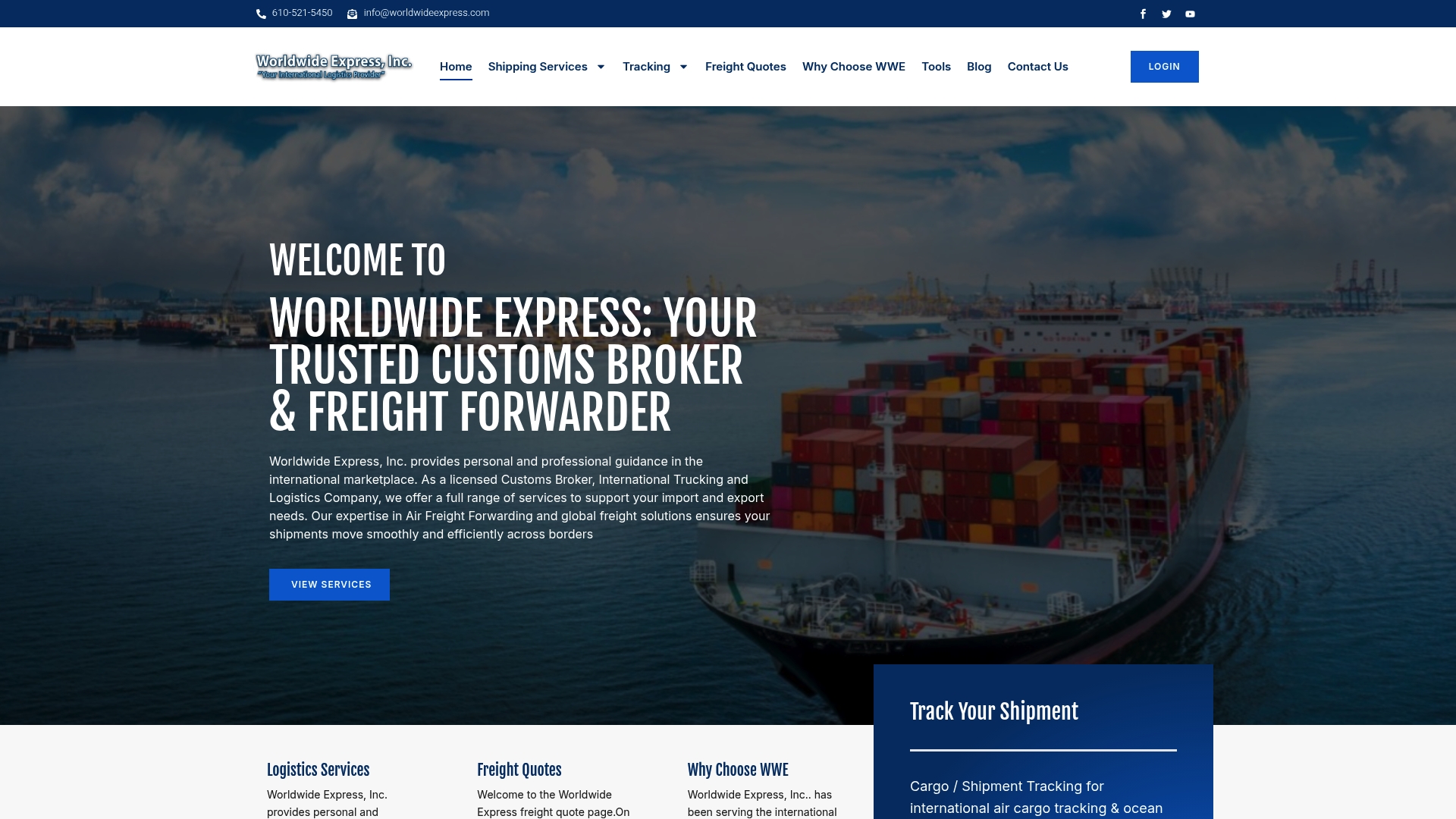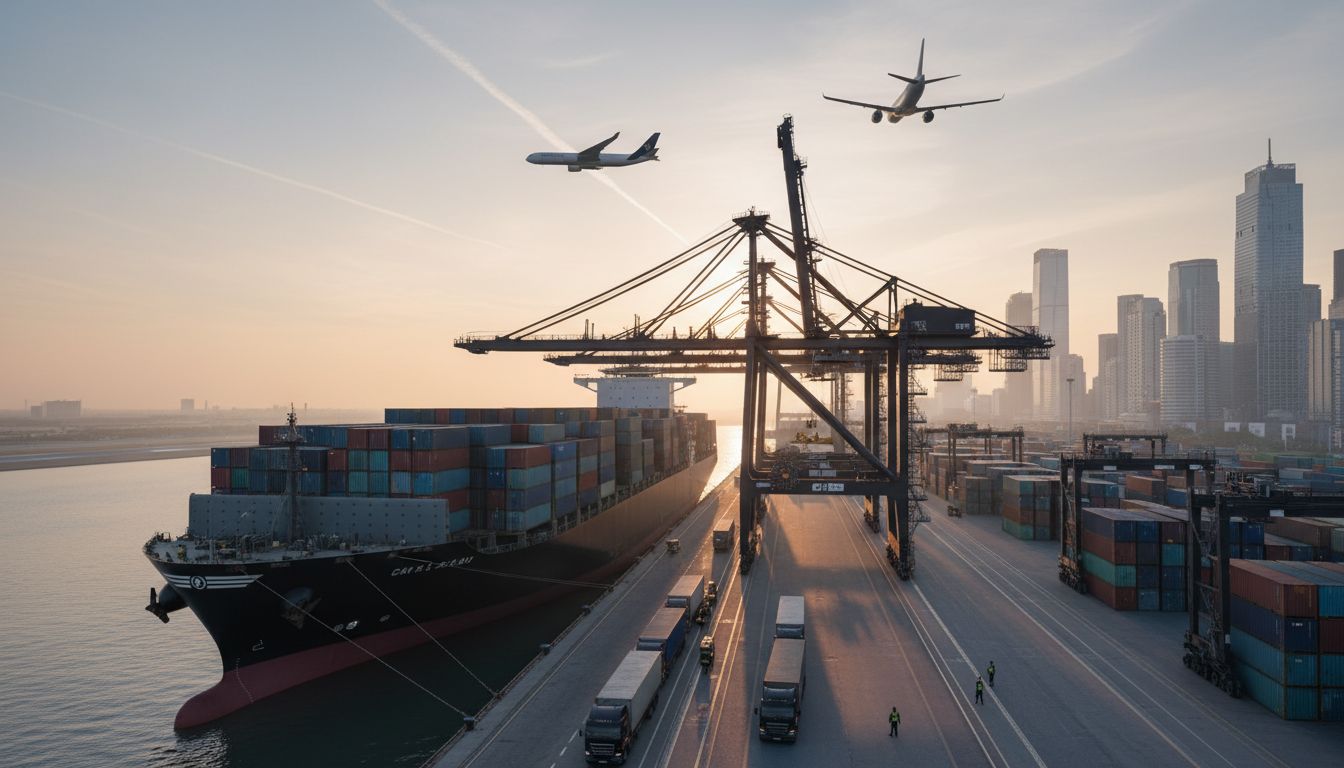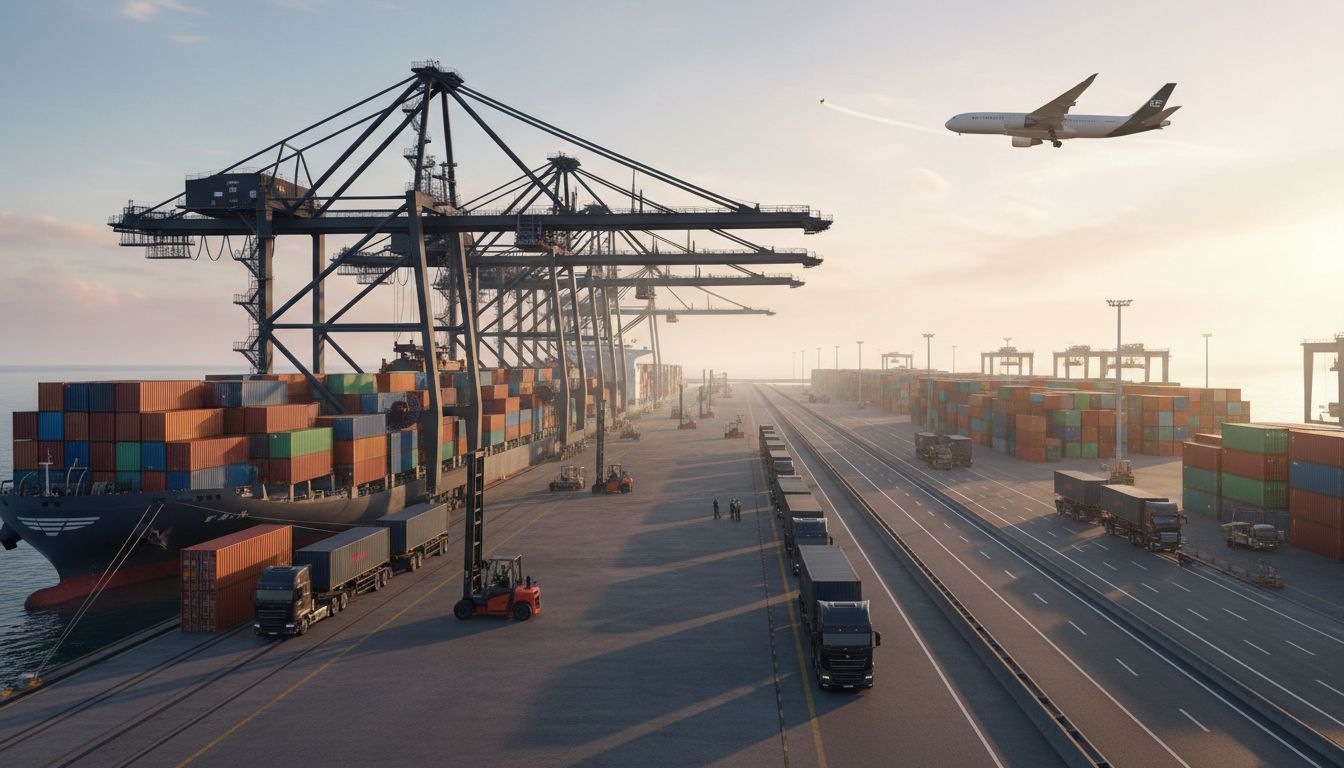Trade finance solutions keep the wheels of global commerce turning, connecting suppliers and buyers across borders every single day. Most people guess banks just shuffle papers and collect fees, but that barely scratches the surface. Trade finance actually supports between 80% to 90% of all international trade worldwide and without it, many businesses could never risk entering global markets in the first place.
Table of Contents
- What Are Trade Finance Solutions And Their Purpose?
- The Importance Of Trade Finance Solutions In Global Trade
- How Trade Finance Solutions Facilitate Transactions
- Key Components Of Trade Finance Solutions Explained
- Real-World Applications And Benefits Of Trade Finance Solutions
Quick Summary
| Takeaway | Explanation |
|---|---|
| Trade finance minimizes transaction risks. | It provides financial guarantees and protections to ensure payment for both importers and exporters. |
| Letters of Credit secure seller payments. | These bank-issued guarantees ensure sellers get paid when contract conditions are met, enhancing transaction confidence. |
| Risk management is a core benefit. | Trade finance solutions help businesses navigate currency fluctuations and political instability with structured financial protections. |
| Supports international market expansion. | With flexible funding options, companies can confidently explore global opportunities without fearing financial loss. |
| Enhances cash flow and credit management. | Mechanisms like advance payment financing help maintain liquidity and manage complex supply chain needs effectively. |
What Are Trade Finance Solutions and Their Purpose?
Trade finance solutions are specialized financial instruments and services designed to facilitate international trade transactions by reducing risks and providing essential financial support for importers and exporters. Corporate Finance Institute explains that these solutions introduce a critical third party to transactions, helping mitigate potential payment and supply chain challenges.
Key Components of Trade Finance
Trade finance solutions encompass multiple financial mechanisms that address different challenges in cross border commerce. These typically include:
- Letters of Credit: Financial guarantees issued by banks ensuring sellers receive payment if specific contract conditions are met
- Bank Guarantees: Promises from financial institutions that protect buyers and sellers against potential transaction failures
- Trade Credit Insurance: Protection against buyer payment defaults or international trade disruptions
At its core, trade finance serves three fundamental purposes. First, it provides risk mitigation by creating structured financial frameworks that protect both buyers and sellers. Second, it enables businesses to expand into international markets by offering financial instruments that reduce transaction uncertainties. Third, it improves cash flow management through mechanisms like advance payment financing and receivables funding.
Financial Risk Management
The primary objective of trade finance solutions is comprehensive financial risk management. International trade inherently involves complex challenges such as currency fluctuations, political instability, and differing legal frameworks across countries.
Trade finance instruments help businesses navigate these complexities by:
- Providing payment assurances
- Offering credit and financing options
- Creating legal frameworks for dispute resolution
- Supporting working capital requirements
Businesses engaging in international trade rely on these sophisticated financial tools to transform potential uncertainties into manageable, strategic opportunities. By understanding and leveraging trade finance solutions, companies can confidently explore global markets while maintaining financial security and operational flexibility.
Ultimately, trade finance solutions represent a sophisticated ecosystem of financial services that bridge geographical and economic gaps, enabling smoother, more secure international commercial interactions.
The table below summarizes key trade finance instruments, their purpose, and the specific financial risks they address to help businesses engage in international trade with greater security and efficiency.
| Instrument | Purpose | Key Risk Addressed |
|---|---|---|
| Letters of Credit | Bank guarantees seller payment upon contract terms | Non-payment/default risk |
| Bank Guarantees | Promises compensation for transaction failures | Counterparty and performance risk |
| Trade Credit Insurance | Covers losses from buyer defaults or disruptions | Non-payment and trade disruption |
| Advance Payment Financing | Provides funding before goods/services received | Working capital and liquidity risk |
| Receivables Financing | Offers liquidity by advancing funds against invoices | Cash flow and payment delay risks |
The Importance of Trade Finance Solutions in Global Trade
The World Bank reports that trade finance supports between 80% to 90% of global trade, underscoring its critical role in international commercial transactions. These financial mechanisms are not merely optional tools but essential infrastructure enabling businesses to navigate complex cross border economic landscapes.
Enabling Global Economic Connectivity
Trade finance solutions transform potential barriers into opportunities for businesses seeking international expansion. By providing financial guarantees, risk mitigation strategies, and flexible funding options, these solutions help companies overcome traditional challenges associated with international commerce.
Key advantages include:
- Reducing transaction risks for both importers and exporters
- Providing working capital to support international trade operations
- Creating transparent financial frameworks across different legal jurisdictions
Financial Risk Transformation
Beyond simple transaction facilitation, trade finance solutions fundamentally transform financial risks. They convert uncertain international transactions into structured, manageable economic interactions. Companies can confidently engage with partners across different countries, knowing sophisticated financial instruments protect their investments.
Businesses utilizing trade finance solutions gain significant strategic advantages. They can:
- Extend credit to international buyers
- Protect against currency fluctuations
- Secure advance payments
- Manage complex supply chain financing requirements
By understanding import export basics, companies unlock potential for global market participation. Trade finance solutions serve as critical bridges connecting diverse economic ecosystems, enabling seamless international commercial interactions that drive global economic growth and innovation.
How Trade Finance Solutions Facilitate Transactions
International Chamber of Commerce highlights that trade finance solutions operate as sophisticated mechanisms that bridge financial gaps between buyers and sellers in international commerce. These solutions transform complex transactions into structured, secure financial exchanges by introducing specialized intermediary services.
Transaction Facilitation Mechanisms
Trade finance solutions employ multiple strategic approaches to enable smooth international commercial interactions. By creating robust financial frameworks, they address inherent challenges in cross border transactions:
- Pre Transaction Risk Assessment: Comprehensive evaluation of potential transaction risks
- Financial Instrument Selection: Matching appropriate financial tools to specific transaction requirements
- Legal Framework Establishment: Creating clear contractual guidelines for international trade
The core objective is to provide financial predictability where traditional payment methods might introduce uncertainty. Businesses can execute transactions with increased confidence, knowing specialized financial instruments protect their economic interests.
Payment and Credit Management
Specialized trade finance techniques transform payment processes by introducing structured credit management strategies. These approaches include:
- Documentary credits that guarantee seller payments
- Advanced payment mechanisms reducing buyer default risks
- Complex financing structures supporting extended supply chains
By understanding freight rate negotiation, businesses can further optimize their international trade strategies. Trade finance solutions create transparent pathways for monetary exchanges, ensuring that financial risks are carefully managed and mitigated across different regulatory environments.
Ultimately, these solutions represent more than simple financial transactions. They are sophisticated economic infrastructure that enables global commerce, connecting businesses across geographical and regulatory boundaries through intelligent financial engineering.
Key Components of Trade Finance Solutions Explained
Export Credit Americas reveals that effective trade finance solutions comprise multiple interconnected financial instruments designed to support complex international transactions. These components work synergistically to create robust financial frameworks that enable global commerce.
Primary Financial Instruments
Trade finance solutions incorporate several critical financial mechanisms that address different transactional challenges:
- Letters of Credit: Guarantees from banks ensuring seller payment upon contract fulfillment
- Bank Guarantees: Financial protections mitigating risks for both transaction parties
- Trade Credit Insurance: Coverage against potential payment defaults or trade disruptions
Each instrument serves a unique purpose in managing financial uncertainties inherent in cross border transactions.
 Risk mitigation remains the central objective, transforming potential economic vulnerabilities into structured, manageable interactions.
Risk mitigation remains the central objective, transforming potential economic vulnerabilities into structured, manageable interactions.
Operational Mechanisms
The operational infrastructure of trade finance solutions involves sophisticated processes that facilitate seamless international trade:
- Comprehensive documentation management
- Financial risk assessment protocols
- Multi jurisdictional compliance verification
- Complex payment processing systems
By understanding customs invoice requirements, businesses can further optimize their international trade strategies. These operational mechanisms ensure transparent, secure financial exchanges that transcend traditional transactional limitations.
The intricate design of trade finance solutions represents a sophisticated financial ecosystem. By integrating advanced risk management techniques, flexible funding options, and comprehensive compliance frameworks, these solutions enable businesses to confidently navigate the complex landscape of global commerce.
Real-World Applications and Benefits of Trade Finance Solutions
The World Bank highlights that trade finance solutions support critical economic activities by enabling businesses to expand market reach, create jobs, and promote sustainable global economic growth. These solutions transform theoretical financial frameworks into tangible business opportunities.
Industry-Specific Implementation
Trade finance solutions demonstrate remarkable versatility across diverse economic sectors. Different industries leverage these financial mechanisms to address unique transactional challenges:
- Manufacturing: Managing complex supply chain financing
- Agriculture: Supporting international commodity trading
- Technology: Facilitating cross border equipment procurement
- Renewable Energy: Enabling infrastructure development investments
Strategic financial planning emerges as a fundamental benefit, allowing businesses to navigate economic uncertainties with increased confidence and operational flexibility.
Economic Impact and Risk Mitigation
Beyond individual transactions, trade finance solutions generate broader economic advantages. They create structured pathways that:
- Reduce payment default risks
- Enhance international business collaboration
- Provide transparent financial mechanisms
- Support smaller businesses entering global markets
By understanding digital freight forwarding and its impact, companies can further optimize their international trade strategies. Trade finance solutions represent more than financial instruments they are sophisticated economic infrastructure connecting global markets and driving innovative commercial interactions.

Ultimately, these solutions transform potential economic barriers into opportunities, enabling businesses to confidently explore international markets while maintaining robust financial security and operational resilience.
This table outlines how various industries implement trade finance solutions and highlights the unique benefits each sector gains by leveraging these financial tools for international operations.
| Industry | Example Application | Key Benefit |
|---|---|---|
| Manufacturing | Supply chain financing | Improved supplier payment cycles |
| Agriculture | Commodity trading support | Enhanced export market access |
| Technology | Equipment procurement | Secure cross border transactions |
| Renewable Energy | Infrastructure project investment | Lower risk for large capital outlay |
| Small Businesses | Market entry funding | Access to international opportunities |
Ready to Take Control of Trade Finance and Logistics?
Navigating trade finance can be overwhelming, especially with challenges like risk management, complex documentation, and the constant pressure to ensure timely payments and secure shipments. Whether you are struggling to protect your cash flow or searching for reliable partners to bridge the gap between financial solutions and logistics execution, you do not have to face these challenges alone. At Worldwide Express, Inc., we support your journey from strategic planning to real-world shipping, connecting effective trade finance solutions with trusted global freight forwarding and customs services.

Do not let financial uncertainty slow down your international growth. Discover how our experience in freight forwarding and logistics can streamline your operations and protect your business every step of the way. Visit our website now to unlock personalized solutions and get expert support for your next import or export shipment. The right partner makes all the difference in global trade. Start today and move your business forward with confidence.
Frequently Asked Questions
What are trade finance solutions?
Trade finance solutions are financial instruments and services that facilitate international trade transactions by reducing risks and providing essential financial support for importers and exporters.
How do letters of credit work in trade finance?
Letters of credit are financial guarantees issued by banks, ensuring that sellers receive payment as long as specific contract conditions are met, thereby reducing transaction risks.
What are the key components of trade finance solutions?
Key components include letters of credit, bank guarantees, and trade credit insurance, each addressing different challenges in cross-border transactions to mitigate financial risks.
Why is trade finance important for businesses engaging in international trade?
Trade finance is important as it supports risk mitigation, enables market expansion, and improves cash flow management, allowing businesses to confidently navigate global commerce.






